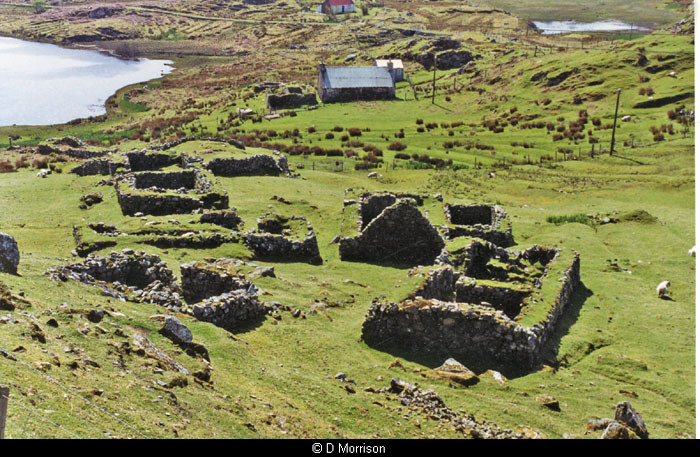16836: The Man of Park
Angus Macleod, Calbost and Marybank, on the people of his native district and the nature of crofting.
For generations the man of Park, like his counterparts in the rest of the Highlands and Islands, was a man without rights or privileges. He was completely at the mercy of inconsiderate and rapacious landlords until he gained a measure of emancipation through the first crofters act of 1886.
Basically he was a crofter/fishermen and in his neighbourhood there were a sprinkling of tradesmen to service the needs of the community, such as weavers, tailors, shoemakers, carpenters, stonemasons, blacksmiths, boat builders, millers etc. The fishermen followed the seasonal herring fishing round the coast of Scotland and as far as East Anglia.
They were patriots who served in all branches of the armed forces, but because of their expertise in seamanship they were in great demand in both the Merchant and Royal Navy, particularly in times of emergency. They were adaptable and from time to time they sought work on the mainland and obviously they had a strong sense of adventure which caused them to emigrate to every corner of the world in an effort to improve their lot. Being bilingual they soon absorbed education when the opportunity arose and consequently they held positions of responsibility both at home and away.
The society was organised into small townships and their choice of site was governed by accessibility to the sea, because it was from the sea that the substance of their livelihood came in large measure. To a crofter/fishermen a land holding was essential because it not only provided a site for a family home, which he invariably built with his own hands, but it provided sustenance for at least part of the year. The land holding was also an insurance against in the event of the periodic failure of either of the two basic industries of fishing and agriculture. They were therefore a people who appreciated their freedom and independent way of life and the part-time nature of their crofts suited their lifestyle.
The crofting way of life is a natural blend of private enterprise and outdoor communal activity, where many tasks are carried out on a township basis. Socially it is a classless society which never the less lends itself to entrepreneurial activity of a wide variety of kinds. A crofter may therefore be a highly educated person or a highly experienced person in more than one field.
It is a caring society where people willingly and gladly shared whatever they had, and if misfortune or illness overtook anyone, the whole community rallied round and assessed in any way they could. The elderly were lovingly cared for in the family circle where they were made to feel useful by using their skills and experience in housework and the upbringing of the young family. A feature of the island way of life is that doors are always open and visiting each others homes at any time of the day or night was, and is still, quite normal.
The toil of earning their living was arduous both on sea and land, but during the long winter evenings they socialised and spent much of their time pleasantly and lightheartedly with their fellows in the village ceilidh house. The young people created their own entertainment and they were never bored or frustrated. Crime was virtually absent.
Angus Macleod Archive
Details
- Record Type:
- Story, Report or Tradition
- Type Of Story Report Tradition:
- Story
- Record Maintained by:
- CEP
